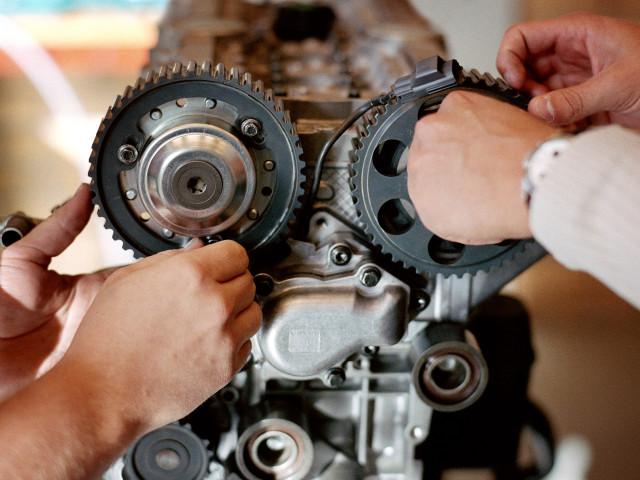- Principles and strategies for circular economy in energy systems and the role of the circular economy for resource and energy efficiency and limitation of climate changes.
- Methods and tools for evaluation of circular economy and circularity.
- Business model innovation and value creation in circular economy in the energy sector;
- Transition case to a circular finance model in energy-intensive industries.
MJ2513 Circular Economy and Energy System 6.0 credits

The prevalent linear economy model based on “take-make-use-dispose” of resources, is economically inefficient and is the cause of multiple environmental problems such as ecosystem degradation and climate change. It also has significant impacts on the depletion of scarce natural resources (such as mining and oil extraction) and haphazard disposal of resources such as municipal solid wastes. In contrast, the circular economy model aims to transform traditional linear economic model and offers a vision of a paradigm shift of socio-technical system. In a circular economy, the maximum value is extracted from resources in use, resource inputs are reduced, regenerative processes are embedded in loops created to reuse and cascade energy and material flows while products and materials are recovered and regenerated at the end of each life cycle stage. This course will introduce students to the systems thinking principles, principles of circular economy model and methods to evaluate the impact of circular economy strategies in the energy systems that are the prerequisites to make current energy and industrial systems more circular. The objective of the course is to provide an understanding of the circular economy from the perspective of lifecycle system thinking, the opportunities and limitations of the circular economy model in energy systems, circularity assessment approaches and specific examples of the application of circular strategies principles in practice.
Information per course offering
Information for Autumn 2026 Start 24 Aug 2026 programme students
- Course location
KTH Campus
- Duration
- 24 Aug 2026 - 11 Jan 2027
- Periods
Autumn 2026: P1 (3 hp), P2 (3 hp)
- Pace of study
17%
- Application code
11623
- Form of study
Normal Daytime
- Language of instruction
English
- Course memo
- Course memo is not published
- Number of places
Min: 1
- Target group
- Elective for all programs as long as it can be included in your program. Open for exchange students.
- Planned modular schedule
- [object Object]
- Schedule
- Schedule is not published
- Part of programme
Degree Programme in Energy and Environment, year 3, SUT
Degree Programme in Energy and Environment, year 3, ITH
Degree Programme in Energy and Environment, year 3, KEM
Degree Programme in Energy and Environment, year 3, MES
Master's Programme, Energy Innovation, year 2, RENE
Degree Programme in Energy and Environment, year 3, MHI
Degree Programme in Energy and Environment, year 3, RENE
Degree Programme in Energy and Environment, year 3, SMCS
Degree Programme in Energy and Environment, year 3, HSS
Degree Programme in Energy and Environment, year 3, SUE
Master's Programme, Decentralized Smart Energy Systems, year 2
Master's Programme, Environomical Pathways for Sustainable Energy Systems, year 2
Master's Programme, Sustainable Energy Engineering, year 2
Master's Programme, Innovative Sustainable Energy Engineering, year 2, Mandatory
Contact
Course syllabus as PDF
Please note: all information from the Course syllabus is available on this page in an accessible format.
Course syllabus MJ2513 (Autumn 2023–)Content and learning outcomes
Course contents
Intended learning outcomes
After passing the course, the student should be able to:
- Formulate and critically discuss principles and strategies for circular economy and consequences of circular transitions for sustainable development in specific sectors, such as resource management, energy and resource-intensive industries.
- Apply tools and methods that are relevant for the assessment of circular performance and choose an appropriate assessment tool based on a problem description.
- Give an account of and illustrate the importance of business model innovation for value creation in a circular economy.
- Evaluate possibilities and challenges to utilise the potential in the innovation of the business models in connection with the transition to a circular business model in the energy-intensive industries.
- Communicate in an organised and structured way solutions and scientific results orally and written.
Literature and preparations
Specific prerequisites
The upper secondary course Eng B/6 or the equivalent Knowledge in Energy systems for sustainable development (equivalent to MJ2508) and Transformation in energy policy and climate agenda (equivalent to MJ2512)
Literature
Examination and completion
Grading scale
Examination
- SEM1 - Seminar, 0.5 credits, grading scale: P, F
- SEM2 - Seminar, 0.5 credits, grading scale: P, F
- INL1 - Exercise, 2.0 credits, grading scale: A, B, C, D, E, FX, F
- INL2 - Project work including oral exam, 3.0 credits, grading scale: A, B, C, D, E, FX, F
Based on recommendation from KTH’s coordinator for disabilities, the examiner will decide how to adapt an examination for students with documented disability.
The examiner may apply another examination format when re-examining individual students.
If the course is discontinued, students may request to be examined during the following two academic years.
Examiner
Ethical approach
- All members of a group are responsible for the group's work.
- In any assessment, every student shall honestly disclose any help received and sources used.
- In an oral assessment, every student shall be able to present and answer questions about the entire assignment and solution.